I am using GEKKO to estimate the parameters of a differential equation and I have bounded one of the variables between 0 and 1. However, when I solve the ODE, I get values outside of the bounds for this variable, so I was wondering if somebody knew how GEKKO finds the solution, as this might help me resolve the issue. Here is the code I use to fit the data. This gives me a solution x and u where x is between 0 and 1.
However, afterwards, I try to solve the ODE using scipy.integrate.solve_ivp, with the initial value of u that I got, and the solution I get for u is not between this bounds. Since it should be unique, I am wondering what is the process that GEKKO follows to find the solution (does it proyect the values to the bound or how does it deal with this?) Any comment is very appreciated.
Here is an MVCE. If you run it you can see that with GEKKO, I get a solution between the bounds and then, when I solve the ODE with solve_ivp, I don't get the same solution. Can you explain why this happens and how can I deal with it? I want to use solve_ivp to predict the next values.
from scipy.integrate import solve_ivp
from gekko import GEKKO
import matplotlib.pyplot as plt
time=[0.0, 0.11784511784511785, 0.18855218855218855,\
0.2356902356902357]
m = GEKKO(remote=False)
m.time= [0.0, 0.11784511784511785, 0.18855218855218855,\
0.2356902356902357]
x_data= [0.0003777630481280617, 0.002024573836061331,\
0.0008954383363035536, 0.005331749410182463]
x = m.CV(value=x_data, lb=0); x.FSTATUS = 1 # fit to measurement
x.SPLO = 0
sigma = m.FV(value=0.5, lb= 0, ub=1); sigma.STATUS=1
d = m.Param(0.05)
k = m.Param(0.001)
b = m.Param(0.5)
r = m.FV(value=0.5, lb= 0); r.STATUS=1
m_param = m.Param(1)
u = m.Var(value=0.1, lb=0, ub=1)
m.free(u)
a = m.Param(0.999)
Kmax= m.Param(100000)
m.Equations([x.dt()==x*(r*(1-a*u**2)*(1-x/(Kmax*(1-a*u**2)))-\
m_param/(k+b*u)-d), u.dt() == \
sigma*((-2*a*(b**2)*r*(u**3)+4*a*b*k*r*(u**2)\
+2*a*(k**2)*r*u-b*m_param)/((b*u+k)**2))])
m.options.IMODE = 5 # dynamic estimation
m.options.NODES = 5 # collocation nodes
m.options.EV_TYPE = 1 # linear error (2 for squared)
m.solve(disp=False, debug=False) # display solver output
def model_case_3(t, z, r, k, b, Kmax, sigma):
m=1
a=0.999
x, u= z
dxdt = x*(r*(1-a*u**2)*(1-x/(Kmax*(1-a*u**2)))-m/(k+b*u)-0.05)
dudt = sigma*((-2*a*(b**2)*r*(u**3)+4*a*b*k*r*(u**2)\
+2*a*(k**2)*r*u-b*m)/((b*u+k)**2))
return [dxdt, dudt]
sol = solve_ivp(fun=model_case_3, t_span=[0.0, 0.2356902356902357],\
y0=[0.0003777630481280617, u.value[0]],\
t_eval=[0.0, 0.11784511784511785, 0.18855218855218855,\
0.2356902356902357], \
args=(r.value[0], 0.001, 0.5,1000000 , sigma.value[0]))
fig, (ax1, ax2) = plt.subplots(1, 2, figsize=(10,3), constrained_layout=True)
ax1.set_title('x')
ax1.plot(time, x.value, time, sol['y'][0])
ax2.set_title('u')
ax2.plot(time, u.value, time, sol['y'][1])
plt.show()
It is not an issue with the version of Gekko as I have Gekko 0.2.8, so I am wondering if it has anything to do with the initialization of variables. I run the example I posted on spyder (I was using google colab) and I got the correct solution, but when I run the rest of the cases I got again negative values for u (solving with solve_ivp), which is quite strange.


